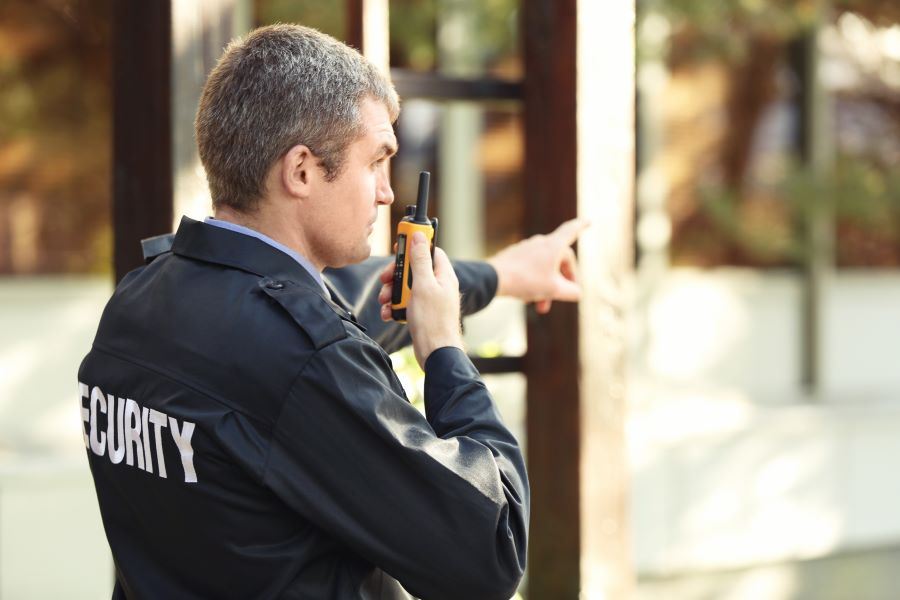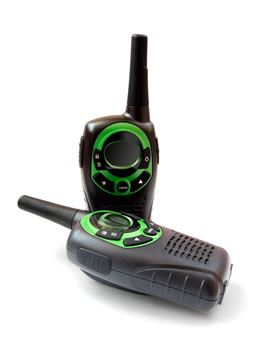The Essential Guide to Licence-Free (PMR446) Radios
 31st May 2023
31st May 2023

 Released On 13th Nov 2023
Released On 13th Nov 2023
Guidance on when you must apply for a UK Ofcom radio licence, the difference between licensed and licence-free radios, types of Ofcom licence, and costs.
Two-way radio licensing in the UK can be a complex topic. This guide will help you understand:
We've used the terms "two-way radio" and "walkie-talkie" interchangeably throughout this article, but there isn't really any difference, except that the phrase walkie-talkie is commonly used in reference to licence-free business radios.
Unrestricted two-way radio communication could lead to severe interference, particularly disrupting essential services like emergency responders, the military, railways, coastguards, and air traffic control. To prevent this chaos, Ofcom regulates UK frequency usage, assigning specific frequencies through various radio licences to meet diverse user needs.
Low-powered walkie-talkies, designed for short-range use on a limited frequency set, are exempt from requiring an Ofcom licence. These devices, with a maximum output of 0.5 Watts, operate exclusively on the PMR446 frequency. They are ready-to-use directly out of the box and fulfill the requirements of many UK users.
In very simple terms, most two-way radios, especially those used for business, require a licence from Ofcom before you can operate them on most radio frequencies. We've described the most common licences that Ofcom issues for business users below. Most licences are easy to apply for, but RadioTrader can help you with your application if needed.
If your needs are simple, though, you might want to buy a licence-free walkie-talkie. As we've already mentioned, these operate on a strictly limited range of frequencies, but they are easy to use and very affordable.
We've written a whole guide to licence-free radios, describing their advantages and disadvantages, but here's a few key differences between them and licensed radios:
If you use a two-way radio system that does not operate on one of the pre-programmed, licence-free frequencies (within the band 446.0 - 446.2 MHz) approved by Ofcom, you'll need a licence. A business walkie-talkie licence is regulated and issued by Ofcom.

Many businesses choose a licensed two-way radio system because, despite the benefits of licence free radios (PMR 446), they do have some disadvantages (such as lower power, interference and a shorter range) which can make them less suitable than licensed radio systems for some businesses.
Taxi and other transport companies, large sites such as hospitals, manufacturers or factories, care homes or businesses based in more than one location are typical examples of situations where a licensed radio system would be preferable.
Business users need more powerful radios than handheld portable “walkie-talkies” provide. If your radio system relies on a base station or vehicle-mounted radios, a licensed radio system is a must.
Ofcom provides different levels of business radio licences. RadioTrader can explain each of these in more detail depending on your needs, but some of the common types are:

This type of licence is ideal if you want to be able to use a two-way radio anywhere in the UK; in fact, it's the only type of licence that allows you to do so. Simple UK Light licensees have access to nineteen frequencies spread across four Business Radio frequency bands. All users with a Simple UK Light licence share this set of frequencies. This type of licence does not cover use of a base station.
Cost: £75 for a five-year licence. Radio Trader can supply both handheld and vehicle-mounted radios on these frequencies.
Simple Site Light licences are ideal if you're operating a radio system with a base station and mobile stations over a small geographical area (typically one kilometre or less). Simple Site Light is often used for radio paging systems, with a range of frequencies available for use. Again, licencees must self co-ordinate with other Simple Site Light users, as they share the same set of frequencies. This type of licence is particularly useful for factory, nursing home or housing association use.
Cost: The licence fee is £75 per site for five years.
A Business Radio Suppliers' licence permits you to:
There are a range of frequencies to choose from, shared with all other users of this type of licence.
Cost: £75 for five years.
Authorising the use of a wide range of business radio equipment, this type of business radio licence is very flexible, with a wide range of frequencies and coverage areas, from small (in-building) to large (county-wide).
Cost: Costs will vary, as they are calculated on various factors such as coverage area and the popularity of the frequency band. Ofcom indicates current costs from around £75 up to £1,480 for a single-channel assignment.
If you want exclusive use of a frequency across any area, be it a 50km2 grid, a county or the whole of the UK, you’ll need an Area Defined licence from Ofcom. You’ll also need to check with Ofcom first, as availability of UK-wide channels can be very limited, but ask RadioTrader if you’re unsure, as this is something we are always happy to advise you about.
Costs: Again, costs will vary depending on the frequency width, its range and the region it covers, but exclusivity will raise the cost to several thousand pounds.

All applications for two-way radio licences for business are made via Ofcom. Your application can be made online from Ofcom's website in most cases (unless you operate more than one base station, have more than one antenna or control points, in which case your application must be paper-based) or you can download a blank application form and post it back to Ofcom’s licencing department.
If all this sounds rather complex, don't panic! RadioTrader is happy to help customers with their free licence advice and application service.
Get in touch for expert help - Call 0151 676 2888
Recommended Products:
 31st May 2023
31st May 2023
 10th May 2016
10th May 2016
Stay up to date with the latest from RadioTrader